Petunia grandiflora: features, types and cultivation
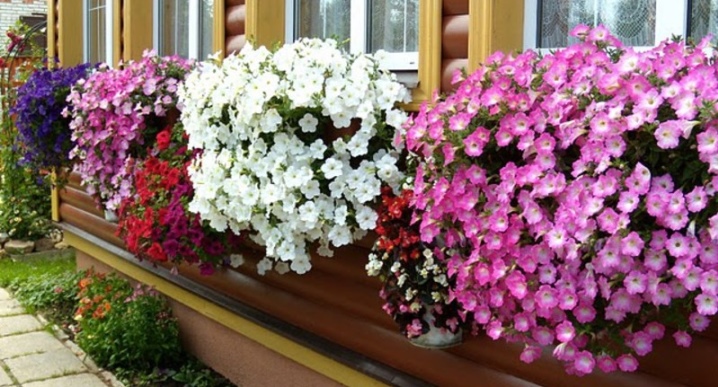
On the flower beds of city parks, as well as on the balconies of apartments and window sills in private buildings, you can often find flowers of a variety in appearance, resembling bells. We are talking about petunia grandiflora, a motley and delicate plant that does not require special attention in the growing process, which has become popular with flower growers.
What it is?
The large-flowered petunia is a perennial plant in the Solanaceae family. It was first discovered on the territory of modern Uruguay at the end of the 17th century. In the middle of the 18th century, the world's first hybrid specimen was bred, which was subsequently grown with success in different countries of the world. Today, petunia grandiflora has more than 30 main types and several dozen hybrid units. It grows both in subtropical climates and in northern latitudes.
The large-flowered petunia has a fairly well-developed stem, reaching 35–40 cm in height. It can be upright and spread over the surface of the soil. In order of sequence, shoots with leaves of a rich green color are concentrated on it. Flowers ovary occurs on short pedicels. The latter grow up to 5-6 cm in radius and in their composition are ordinary (simple) or terry (fluffy) elements of the whole plant.
The color scheme of petunia is so diverse, it affects almost all iridescent shades. The most common are white, pink, red, purple tones. There are floral patterns with edging or blotches.
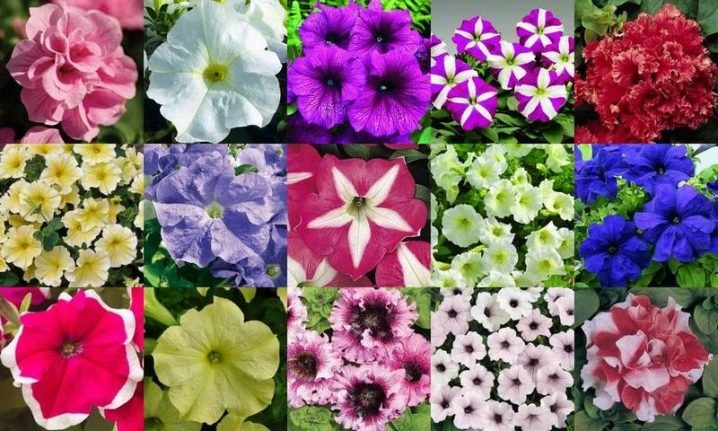
Modern large-flowered petunia is able to grow and develop well not only in a flower bed, but also in a hanging basket or pots, in a container or decorative vase, in those conditions where the amount of substrate is rather limited by the shape of the container. A distinctive feature of the plant is its ability to coexist with other flowers, for example, in a flower bed.
How is it different from multiflora?
Petunia has several varieties. Among them, the most popular are the following:
- grandiflora and multiflora;
- floribunda, miniflora.
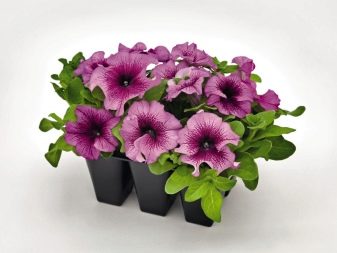


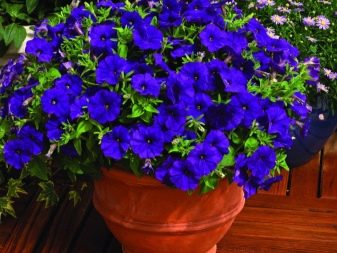
Grandiflora is a large-flowered plant. The size of such a flower can be 5–7 cm in radius, but the multiflora has not one, but several flowers on the stem, amounting to 4–7 cm in a circle. As for the structure of the peduncle, in grandiflora and miniflora it can be terry, have a specific shape, and also differ in color.
Unlike the three listed species, grandiflora is very sensitive to changes in weather conditions. She does not tolerate rain and lack of sun for a long time. As a result, flowers fall off, rot on the shoots may develop. If the weather changes towards warming, precipitation stops, then petunia resumes its growth, but it needs up to 14 days for all its vital functions to return to normal. Multiflora, on the other hand, tolerates any weather changes, strong winds and heavy rain.
After the rain stops and warming, it recovers very quickly and blooms as before.
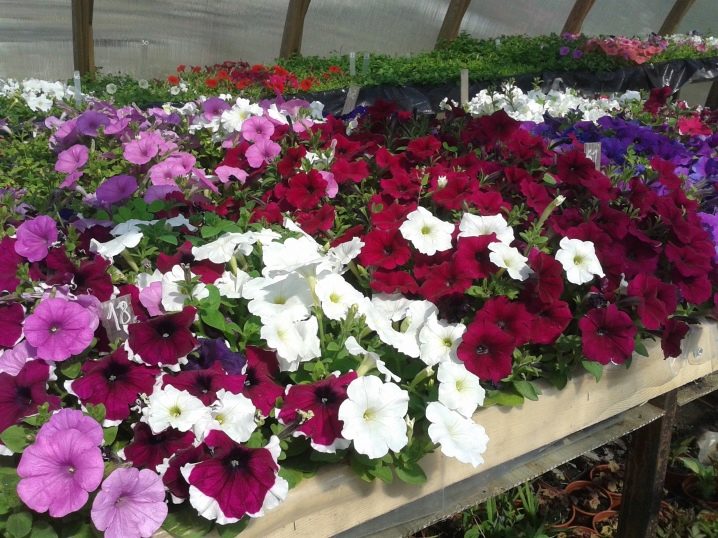
Varieties
All petunia flowers can be grouped into three main classes.
- First grade grandiflora includes all bush representatives. Shrub petunias grow in flower beds and along paths in country or private houses.
- To the second category petunias include ampelous flowers.Ampel grandiflora is considered an exquisite option, since it grows in the form of shoots falling from a pots or basket, reaching about 1.5 m in length.
- Third variety Are cascading plants. Cascading flowers tend to form shoots up to one and a half meters to the sides, due to which they are prone to very rapid growth. In height, petunias gain no more than 40-50 cm.
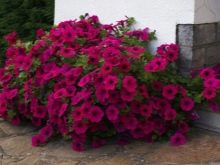
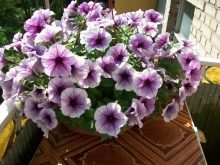

Each class is further subdivided into the following varieties:
- Plants with ordinary (simple) and double flowers;
- petunias with large and small peduncles;
- samples in one color range and having two or more tones;
- specimens that are fringed and do not contain this element;
- undersized, mix, stems creeping on the ground.
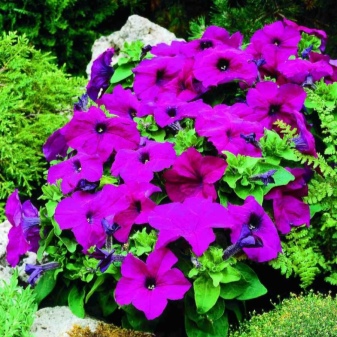

Today, there are a large number of colors, different in shape, height and tone.
- Petunia "Alba" has white, large-sized flowers turning into a pink shade. They have fringed edges. The plant rises upward to a level of 30–40 cm. It blooms until autumn frosts. It is unpretentious in care.
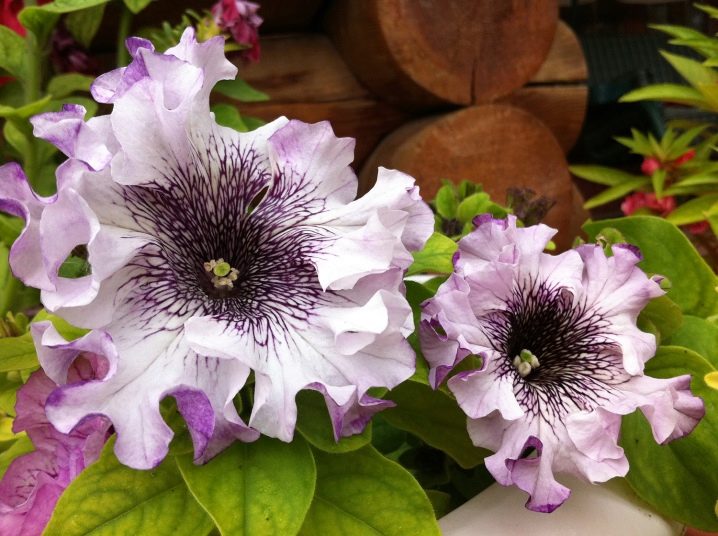
- "Fimbriata karkulka" has large flowers with fringes around the edges. It reaches a height of 30 cm. The plant combines white, pink and purple tones.
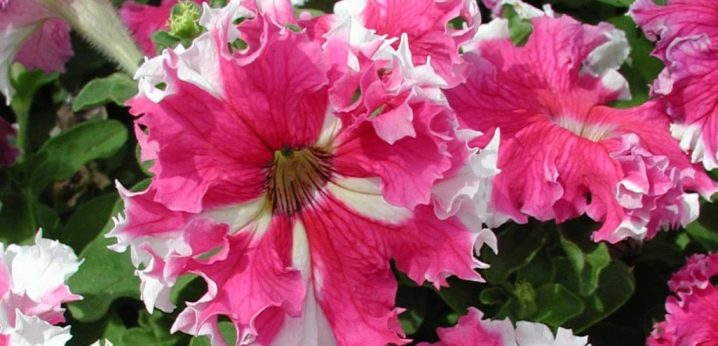
- Dolce Limonsello named for its large lemon-colored flowers. This grandiflora is a tall plant, up to 50 centimeters. The flowering period is June – October. This variety is very fond of sunlight and tolerates dry periods well.

- "Success 360" grows up to 40 cm high. She is endowed with a branching trunk. The flowers are large, up to 5 cm in radius, with different colors. Petunia is annual.
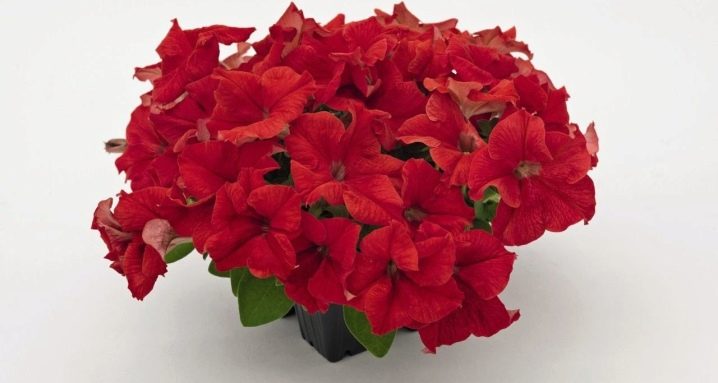
- "Harlequin Burgundy F1" Is a beautiful petunia that combines two colors - white and dark red. The flowers are edged with delicate lace. They grow in diameter up to 70–80 mm. Flowering continues throughout the summer. It ends with the arrival of cold weather.
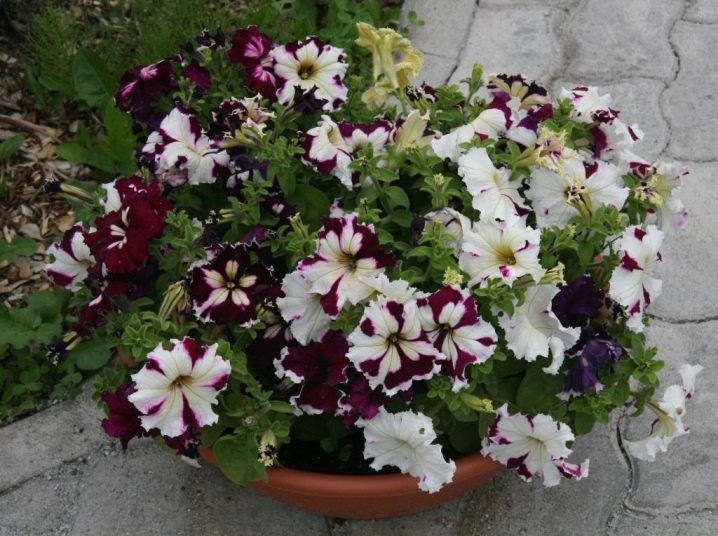
- "Angelica" is a mixture of several petunias that have both simple flowers and full or half double flowers. The plant rises in height by 25–35 cm and is considered a low-growing variety. The flowers are very large, up to 8-10 cm in diameter. The disembarkation takes place at the end of May. The flower can grow in places where the amount of soil is small (containers, garden pots).
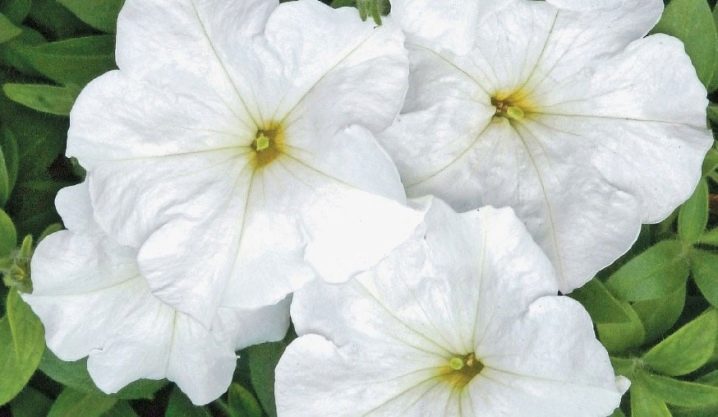
- "From reader red" Is a decorative flower. It grows well in arid regions and tolerates windy and rainy weather without any problems. In shape, it resembles a ball with a diameter of up to 35 cm. The height of the petunia is from 20 to 25 cm. The plant has strong stems. Disembarkation takes place at the end of April and beautiful red flowers are admired throughout the summer.
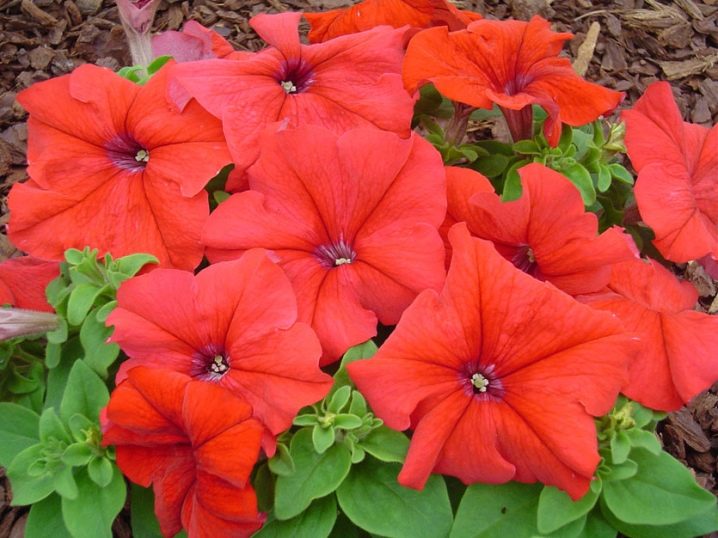
- "Prism Blackberry Sandai" Is a dwarf, branched plant up to 200 mm in height. It has a large flower 100 mm in size. This variety looks very good in hanging baskets, decorates borders, flower beds.
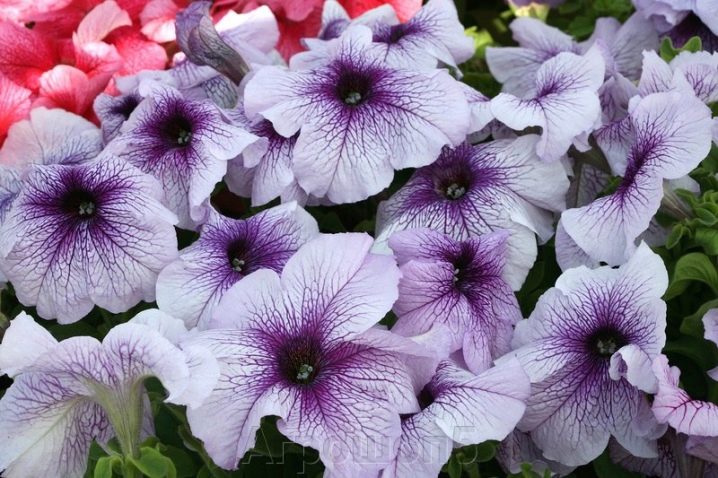
- "Hulahoop blue" considered the most common petunia. The plant is unpretentious and is planted as a greening crop in city parks, flower beds, and also in private gardens. It grows both in arid places and in soil containing a large amount of moisture. Her flower is elegant, large, red. She is one of the bush petunias. The plant reaches a height of 300 mm. Blooms from early June until late autumn.
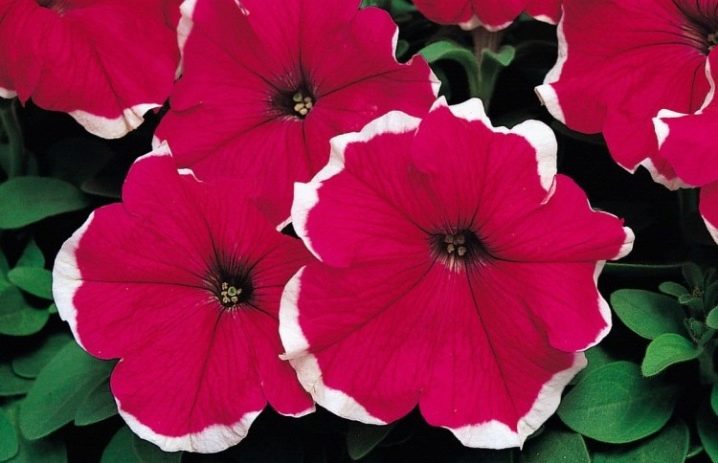
- "Espresso grande" - this is an annual flower up to 100 mm in size with a height of 200 mm. Flowers are decorated with white stripes, there are many of them. The flowering period is from early June to frost.
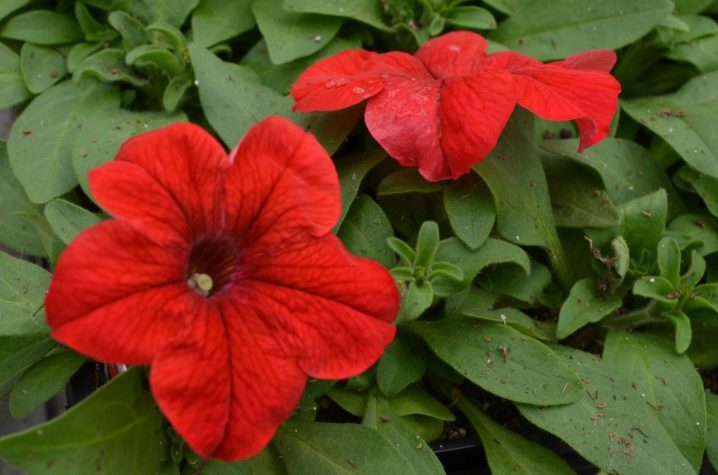
- Petunia "Galaxy F1 red" has large red or white buds. It rises to a height of 350 mm.

- "Nana yellow F1" Is an annual plant that tolerates rainy and cool weather well. It grows from early summer to late autumn, until frost comes. Petunia is tall, can grow to a mark of half a meter.
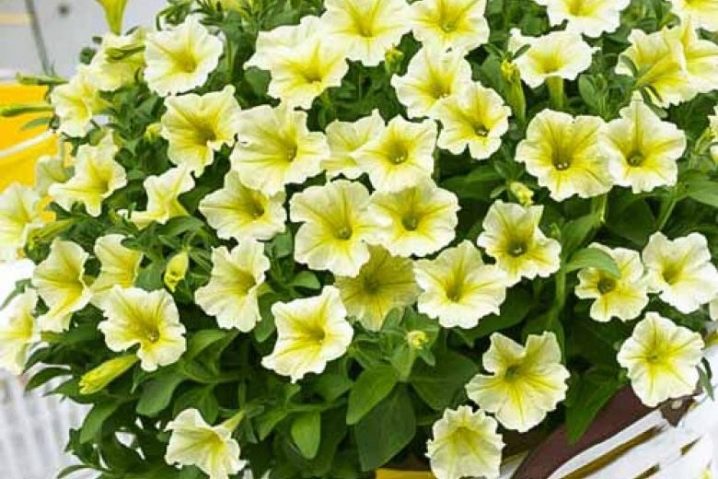
- "Tatiana F1" is a very fast growing hybrid that is a large-flowered specimen.It reaches 100 mm in diameter, grows as a bush, rises up to 300 mm. The flower is hardy.
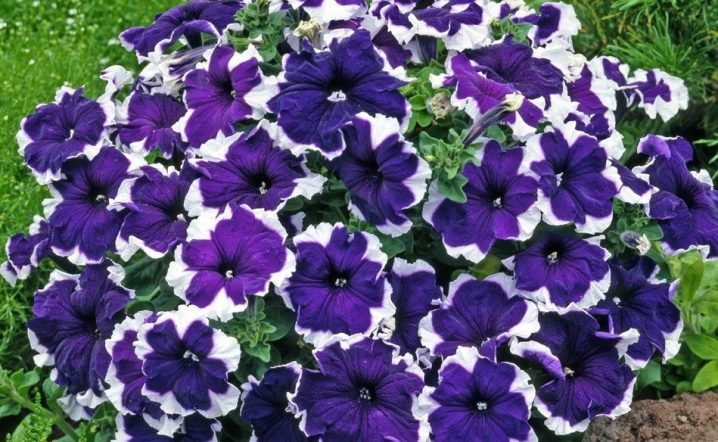
- "Spherica" - modern look of petunia. It grows in the form of a ball up to 25 cm, has very large flowers (up to 6 cm in radius). She tolerates transfer and transportation. It is disembarked in May.

- "Olga F1" is a novelty large-flowered petunia. It is a very beautiful velvet flower in burgundy tone, framed with white fringes around the edge.

- "Prism Sunshine" looks like a sphere 12.5 cm in radius. Its large flowers have a very rare yellow tone, smoothly turning into lemon. This variety is a decoration for suspended structures, as well as flower beds, containers located on balconies.
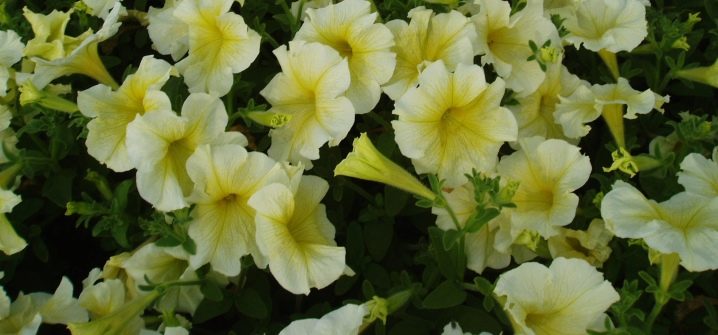
- "Ballerina of Burgundy F1" Is a new type of petunia grandiflora. It is distinguished by a huge number of large flowers on the stem with fringes along the edges. It can be grown in pots and pots, tolerates temperature extremes, and grows at -8 degrees Celsius. If you create conditions for a flower under which the air temperature does not drop below 20 degrees with a plus sign, then this plant can not stop flowering all year round.
It loves a lot of light, is patiently able to endure drought.

- "Empress F1" is an annual plant with large inflorescences, up to 80 mm, reaching 30 cm in growth. It blooms spherically, is well adapted to temperature extremes, therefore it is recommended for planting on balconies or in suspended containers.
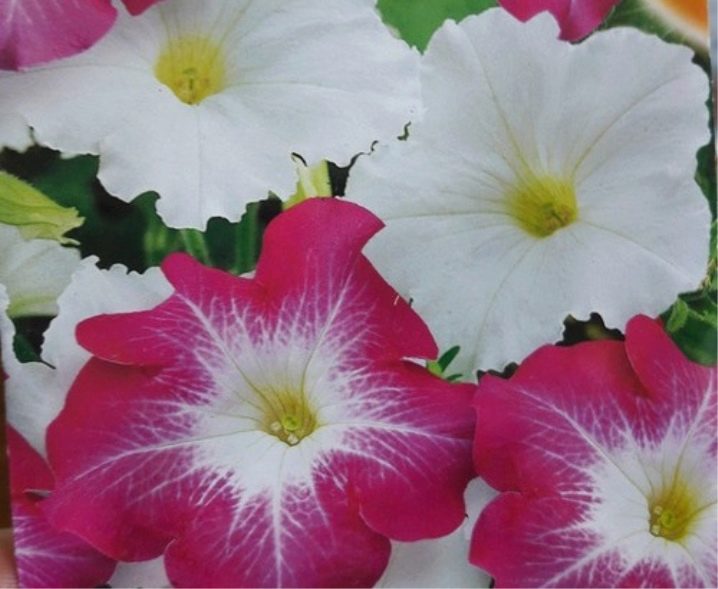
- "Benefit F1" - large-flowered petunia. Its flower is fringed along the edge. In size, it reaches 60 mm, and the stem itself grows to a height of 300–350 mm. The plant is characterized by a short growing period, as well as high vitality.
It tolerates a transplant while in bloom.

- "Prism Dewberry Sandai" - This is a large-flowered, undersized specimen of grandiflora, rising no more than 18–20 cm above ground level. The flower is large, up to 100 mm in diameter. It blooms early, has a variety of colors.

- "Donna F1" is a large-flowered bush mixture, with flowers of different color, reaching 80 mm. If the plant was sown early, then its flowering begins in May. Dry-tolerant flower culture loves light.
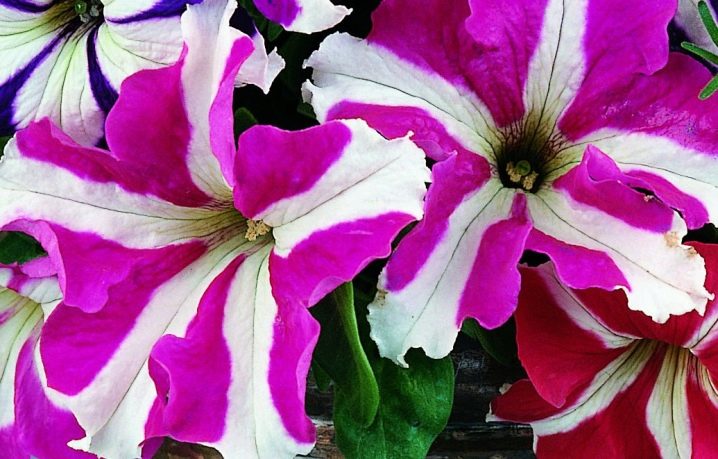
- Frost F1 - a beautiful 30-centimeter bush with flowers endowed with a white delicate border around the edge. It begins to bloom early, in May. The planting is carried out after the frost leaves in the spring.
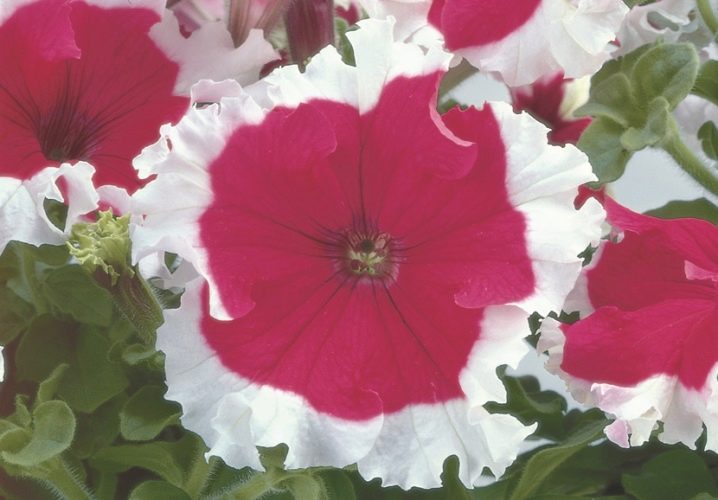
- "Gloriosa F1" differs in large double flowers. There can be 1 or 2 shades. The petals are wavy along the edge. When the flower has blossomed, the buds cover it so much that the leaves are almost invisible. The plant is undemanding to soil and weather conditions. The flowering period covers the first summer month and ends at the end of October.

- "Touga F1" - a tall and branched hybrid plant with large red flowers up to 100 mm in diameter. It grows actively on nutritious soils, resistant to drought, like other petunias, blooms in late May or June and pleases with its beauty before the arrival of cold weather.
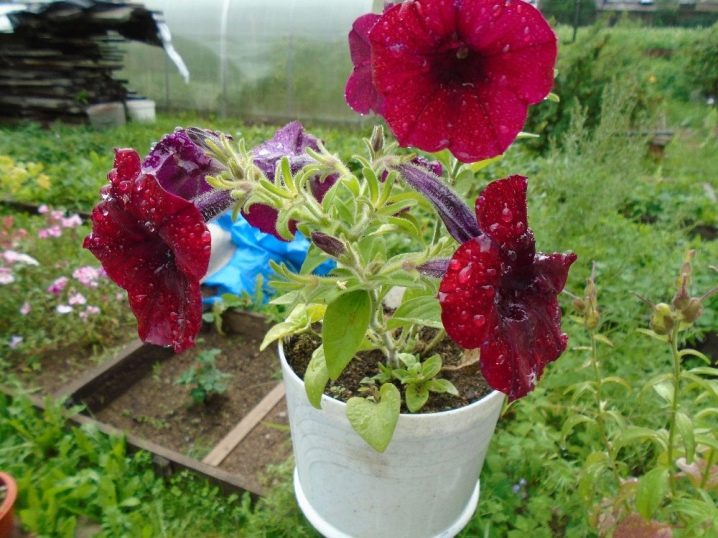
Landing
In February, you can plant seeds in the ground at home in order to get seedlings. If the petunia flower is supposed to be grown at home, then the seeds can be planted at any time of the year. You get a universal substrate at a flower shop, place it in pots or a container, and pour seeds on top. Then they should be sprinkled with water and covered with a glass lid. A cling film is best. A kind of small greenhouse will be created under it.
After small sprouts have formed over time, remove the lid or film and leave the seedlings to grow in size in the same containers. When 2 or 3 small leaves are formed on the seedlings, it's time to plant the petunia in open ground.Whether you are going to form a flower bed or plant flowers along the paths, a favorable period for this will be the time when the cold is over and the frost will not resume.
Usually disembarkation is carried out, as mentioned above, in late May or early June. There should be no weeds on the plantation for petunia grandiflora. Choose an area that is well-lit by the sun and protected from gusty winds as much as possible.
Before removing the seedling from the container in which it grew, it is recommended to moisten the soil with water so as not to damage the sprout. It is not necessary to remove the soil from its roots, planting is done with clods on the roots. Shallow holes are made at the landing site. Bush petunias should be planted 150 mm apart. The seedlings are immersed in the holes and covered with soil, after which they are watered.

How to care?
The whole process does not require large labor costs, as well as deep knowledge. It is necessary to carry out regular watering, apply fertilizers, and trim flowers. As additional nutrients that contribute to the formation of beautiful peduncles, drugs are used, among which there is "Agricole". You can feed the plants with other fertilizers. The most common are the following:
- "Solution";
- "Kemira";
- "Stimulus";
- "Master".
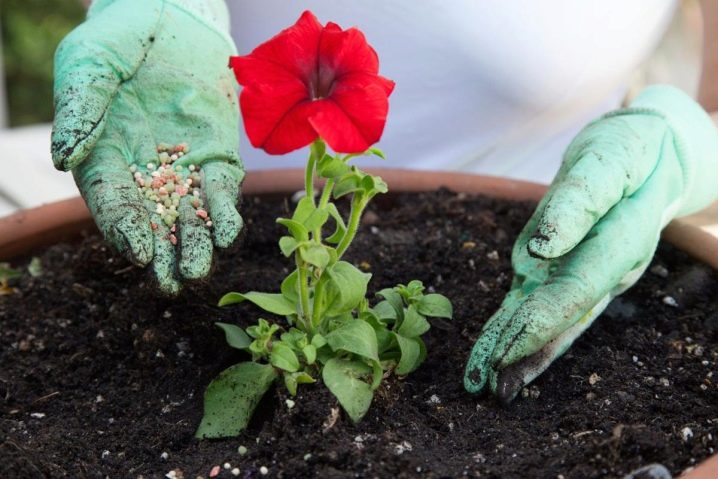
Care implies timely watering of the plants. In hot summer, flowers are watered more abundantly than at other times of the year. Grandiflora prefers light, constant humidity. The soil should be moistened daily, irrigation has a very beneficial effect on petunia. In the spring, watering plants is recommended in the morning or afternoon. This should not be done in the evening, since the air temperature at night drops significantly, this circumstance can adversely affect the roots of grandiflora.
Pruning of peduncles is carried out during the entire period of their growth. Remove older flowers with garden scissors.
It is necessary to carry out such a procedure due to the fact that petunia, instead of prolonged flowering, can focus on the process of forming flowering seeds.
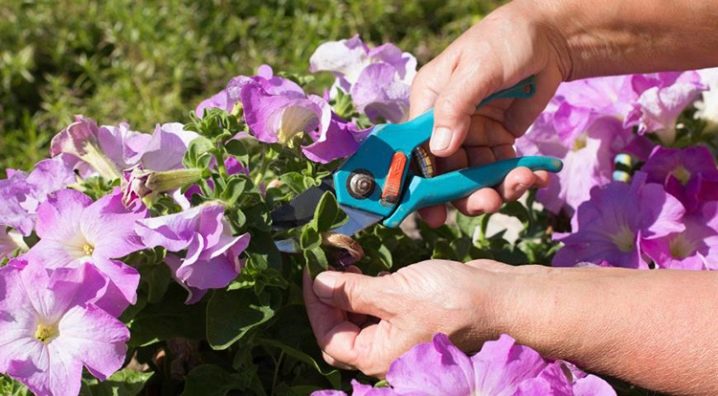
Diseases and pests
Large-flowered grandiflora is affected by infections and fungi. Black leg is considered a dangerous disease, from which it is very difficult to heal a flower. It manifests itself in the defeat of the petunia stem, it begins to darken and loses its strength. The disease appears as a result of waterlogged air and acidic soil.
If the bushes are planted too close to one another, then the likelihood of the formation of excess moisture between them is very high. The chemical drugs that fight this disease should be based on oxadiccyl or mancozeb. Diseased stems on the bushes are immediately removed, and it is treated with formulations. Bordeaux liquid, "Ridomil MC", the drug "Maxim" are also suitable.
Grandiflora can hit gray rotwhen there is too much nitrogen in the soil, as well as increased air humidity. Brown spots appear on the leaves of the plant and its stem. The disease can be cured with the help of "Integral" or "Skor", as well as copper-containing preparations.... Treatment is carried out in 2-3 doses with a temporary break (per week).
Powdery mildew manifests itself in the form of a white bloom on the leaves. They treat her with "Fundazol".
Petunia is also attacked by pests. It can be whiteflies, aphids, spider mites. From their influence, the flowers wilt, the leaves are deformed, or the whole plant is covered with a layer of cobwebs. Different preparations are used to fight insects.... "Confidor", "Actellik", "Decis" destroy whitefly and aphids. Fitoverm, Akarin and other compounds protect it from spider mites.
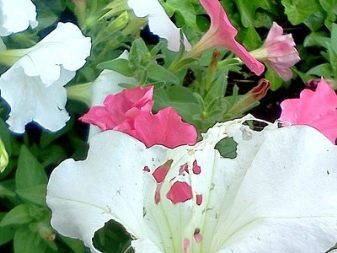
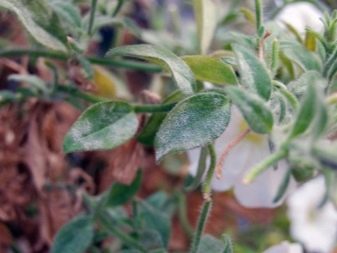
For growing petunias without errors, see the next video.







































































































The comment was sent successfully.